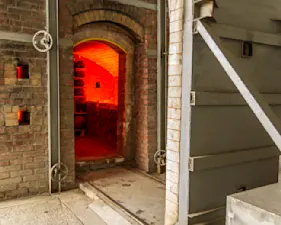What Makes This Word Tick
The word "sacrosanct" is a heavy hitter in the vocabulary game. It refers to something that's so sacred or important it can't be interfered with or criticized. Think of it like a "Do Not Disturb" sign but on an ethical and sometimes spiritual level. It's the kind of word you might use when describing personal boundaries that are not up for debate.
If Sacrosanct Were a Person…
Picture a wise, elderly sage living on a mountain, immune to the hubbub of modern life. They’re unyielding in their values, perhaps sipping tea without letting the chaos of the world ruffle their serenity. You wouldn’t dare question them — their principles are firmly in place.
How This Word Has Changed Over Time
Traditionally, "sacrosanct" was more closely tied to religious contexts, often describing sacred spaces or people. Over time, its use has expanded into secular realms. Nowadays, you might hear it applied to all sorts of personal principles or institutional policies that are viewed as untouchable.
Old Sayings and Proverbs That Use Sacrosanct
While "sacrosanct" isn't commonly peppering classic proverbs, the sentiment it captures echoes through expressions like "Let sleeping dogs lie." There’s an understanding of leaving well enough alone when something is deemed untouchably important.
Surprising Facts About Sacrosanct
Did you know "sacrosanct" originated from the Latin word "sacrosanctus"? It’s a compound of "sacer," meaning "sacred," and "sanctus," which means "holy" or "consecrated." This double whammy of sanctity makes the term quite imposing.
Out and About With This Word
You might encounter "sacrosanct" in discussions of privacy, such as someone’s personal diary or the contents of a lockbox. It’s also frequently utilized in politics to describe foundational principles of a nation or the seeming inviolability of traditions.
Pop Culture Moments Where Sacrosanct Was Used
Though not typically on the lips of pop stars, "sacrosanct" could quite fittingly be found in the rhetoric of characters who uphold high moral grounds. Imagine Gandalf from "The Lord of the Rings" asserting something as sacrosanct in his booming, authoritative voice.
The Word in Literature
In novels, "sacrosanct" might appear in the more dramatic dialogue or narrative describing institutions like the monarchy or church. It fits well within genres like historical fiction, where tradition and perceived holiness often clash with change.
Moments in History with Sacrosanct
Recall the Magna Carta? While "sacrosanct" might not have been printed on its parchment, its influence on personal rights was a sacred shift then. The way laws were set to protect freedoms could have been deemed sacrosanct by its proponents.
This Word Around the World
In France, the word sacré combines a similar essence, representing something that can't be trifled with. Across cultures, every language has its variant to safeguard what’s considered beyond reproach, mirroring "sacrosanct" in spirit.
Where Does It Come From?
The term traces back to ancient Roman laws where the body of a tribune was sacrosanct, meaning anyone who harmed them faced severe consequences. Its roots are steeped in making certain entities or ideas truly untouchable.
How People Misuse This Word
A common misstep is using "sacrosanct" to describe something that's merely important or valued. It’s more accurate for matters seen as inviolable at the highest level, not just everyday favorites like your morning coffee ritual.
Words It’s Often Confused With
Sacred: While similar, "sacred" is often religious and doesn't always imply inviolability.
Inviolable: This shares the meaning but lacks the holy connotation.
Sanctified: Used more in religious contexts and implies consecration rather than untouchability.
Additional Synonyms and Antonyms
Synonyms include inviolable, sacred, and untouchable, while antonyms could be profane, vulnerable, or ordinary. Each presents a spectrum from the hallowed to the commonplace.
Want to Try It Out in a Sentence?
Imagine your favorite old-fashioned diner in town. “To the community, that diner is sacrosanct—a place where the roots of countless memories run deep, untouched by time.”
















